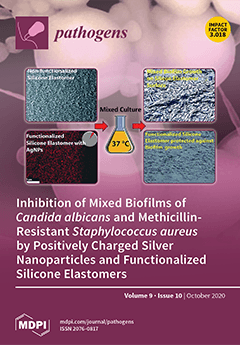Salmonella enterica serovar Gallinarum (
S. Gallinarum) is the cause of typhoid in chickens but the immune factors that may facilitate the development of typhoid have not been fully elucidated. We show that, in contrast to non-typhoid
S. Enteritidis infection,
S. Gallinarum significantly reduced nitrite ion production and expression of mRNA for heterophil granulocyte chemoattractants CXCLi2 and IL-6 in chicken monocyte-derived macrophages (chMDMs) (
p < 0.05) at 6 h post-infection (pi).
S. Gallinarum also reduced IFN-γ and IL-17 expression by CD4
+ lymphocytes cultured with infected chMDMs for 5 days but did not induce a Th2 phenotype or anergy. In vivo,
S. Gallinarum also induced significantly lower expression of CXCLi1, CXCLi2, IL-1β, IL-6 and iNOS mRNA in the caecal tonsil by day 2 pi (
p < 0.05–0.01) and consistently lower levels of IFN-γ, IL-18, IL-12, and IL-17. In the spleen,
S. Gallinarum induced significantly lower levels of iNOS and IFN-γ (
p < 0.01 and 0.05 respectively) and consistently lower levels of IL-18 and IL-12 but significantly greater (
p < 0.01) expression of anti-inflammatory IL-10 at day 4 and 5 pi when compared to
S. Enteritidis. This immune phenotype was associated with transit from the intestinal tissues to the liver by
S. Gallinarum, not observed following
S. Enteritidis infection. In conclusion, we report an immune mechanism that may facilitate typhoid disease in
S. Gallinarum-infected chickens. However, down-regulation of inflammatory mediators, upregulation of IL-10, and associated liver colonisation are also characteristic of human typhoid, suggesting that this may also be a useful model of typhoid in humans.
Full article






